AI Pest Control: Benefits vs. Costs
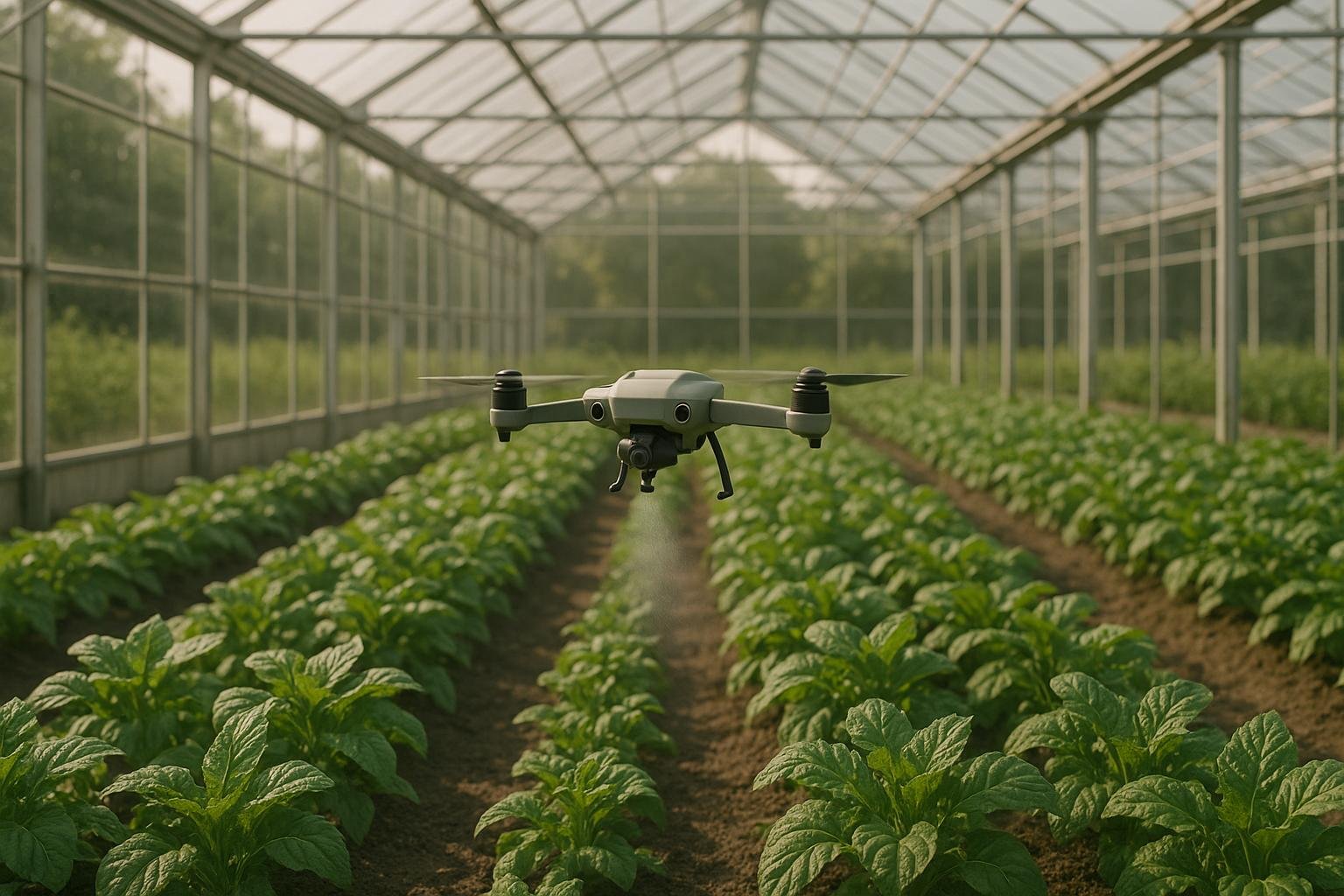
AI pest control systems are transforming how pests are managed, offering precise detection, reduced pesticide use, and long-term cost savings. Here's what you need to know:
- Effectiveness: AI systems can cut pest populations by 40-60% within the first year and reduce pesticide use by up to 90%.
- Cost Savings: Businesses report 30-40% savings in pest management costs by the second year.
- Upfront Costs: Systems range from $30,000 to over $1,000,000, with smaller-scale setups costing $30,000-$100,000.
- Key Features: Real-time monitoring, predictive analytics, and autonomous devices for targeted treatments.
- Challenges: High initial investment, integration difficulties, and data privacy concerns.
Quick Comparison Table:
| Aspect | AI Pest Control | Traditional Pest Control |
|---|---|---|
| Effectiveness | Reduces pests by 40-60%, accurate up to 99.65% | Often reactive, less precise |
| Cost | $30,000–$1,000,000 upfront; long-term savings | Lower upfront costs; higher recurring costs |
| Chemical Use | Reduces by up to 90% | Broad pesticide application |
| Monitoring | Continuous, real-time | Manual, periodic |
| Scalability | Easily scalable | Labor-intensive |
AI pest control is a promising solution for reducing crop damage, saving costs, and minimizing chemical use, but it requires careful cost-benefit analysis to determine its value for your specific needs.
The AI Revolution in Pest Control: What You Need to Know

Core Components of AI Pest Control Systems
AI pest control systems rely on three key technologies that work together to gather data, analyze patterns, and take action automatically. These systems are reshaping pest management by offering greater efficiency and cost savings.
Automated Pest Detection and Monitoring
At the heart of AI pest control are advanced sensors and cameras. These devices use five types of sensors - low-power image, thermal, fluorescence, acoustic, and gas - to continuously monitor and analyze pest activity.
"AI detection systems automate pest identification and monitoring using cameras and sensors that collect data such as heat, movement, and sound." - FieldRoutes
These systems process data with impressive speed and accuracy, achieving detection rates as high as 99.65%. A great example is the Trapview System by EFOS Ltd., which employs IoT-enabled insect traps equipped with cameras and sensors. These traps monitor pest populations in orchards and vineyards, allowing for timely interventions. Another example is FarmSense's pest-monitoring platform, which collects both insect and environmental data directly from the field. This information is sent to the cloud, where AI analyzes it. Over time, the system adapts to specific conditions like crop types, weather, and terrain, making its recommendations increasingly precise.
Machine learning plays a crucial role in identifying pest species and predicting infestations, while IoT devices continuously track environmental factors to provide real-time insights. This real-time monitoring sets the stage for AI's predictive capabilities, which aim to stop infestations before they start.
Predictive Analysis and Treatment Recommendations
While detection focuses on current pest issues, predictive analysis looks ahead, using data to forecast potential infestations and recommend solutions. By combining historical trends with real-time inputs - like weather conditions and pest life cycles - AI can predict pest activity and suggest targeted treatments. This approach helps reduce pesticide use and minimizes crop damage.
The results speak for themselves. In a study in India, AI-based pest management cut pesticide costs by 30% and boosted crop productivity by 20%. Similarly, in Kenya, AI systems monitoring fall armyworm activity in maize fields provided early warnings, reducing crop losses by 40%. Partnerships like the one between Semios and Google have further improved these predictive models. For instance, their collaboration reportedly increased almond production by curbing a moth population by 1.5 billion.
It’s worth noting that AI doesn’t replace human involvement entirely. Human oversight is still critical to verify alerts and address potential errors like false positives or negatives. With both accurate detection and predictive insights in place, autonomous devices can step in to handle pest control with precision.
Autonomous Devices for Pest Management
Autonomous devices are revolutionizing pest control by delivering targeted treatments across large areas, often in challenging or unsafe environments.
Devices like Blue River Technology's smart sprayer, which reduces herbicide usage by up to 90%, and LahakX's AI-powered drone sprayers highlight the efficiency of automated pest management.
"We were finding ways not to get close to pesticides and get robots to do the job instead", explains Eylon Sorek, LahakX co-founder and CEO.
Other innovations include Solinftec's Solix Ag Robotics, which uses precision spraying to eliminate weeds and pests, and AeroPest's autonomous drones, designed for both pest detection and management. AeroPest is also developing AeroInspect, a mobile app that generates detailed inspection reports featuring images of pests, their nests, and related damage.
These advancements demonstrate how AI-powered tools are making pest control more effective and safer, all while reducing the reliance on manual labor.
Benefits of AI Pest Control
AI-powered pest control offers a range of advantages that tackle some of the biggest challenges in traditional pest management. These systems go beyond simple automation, providing measurable improvements in crop protection, environmental safety, and operational efficiency.
Reduced Crop Damage and Higher Yields
The key to AI pest control lies in early detection. These systems can spot the first signs of pest activity, often before visible symptoms appear. This allows farmers and gardeners to act quickly, preventing small issues from spiraling into major crop losses. According to the FAO, pests are responsible for 30–40% of global crop losses annually.
AI detection systems are impressively accurate. For instance, models have identified apple scab with 95% accuracy and detected fall armyworm in maize with 93.47% validation accuracy. This level of precision ensures timely interventions, safeguarding crops from devastating infestations.
Additionally, AI systems use data - such as weather patterns, crop conditions, and pest activity - to predict outbreaks. This forecasting ability enables preventive actions, shifting the focus from reactive treatments to proactive solutions.
Health and Environmental Advantages
AI pest control minimizes the use of chemicals, benefiting both human health and the environment. Unlike traditional methods that involve spraying entire fields, AI systems target specific areas where pests are detected. This precision can reduce herbicide usage by as much as 90% compared to conventional spraying techniques.
AI-driven biopesticides are another game-changer. These treatments are designed to target specific pests while sparing beneficial organisms, preserving the ecosystem. For example, cotton farmers in India who used AI-based pest prediction models cut their pesticide use by 30%, leading to healthier crops and better yields. Similarly, California vineyards have adopted drones equipped with AI cameras to identify pest hotspots, allowing for precise treatments that protect grape quality while reducing chemical exposure.
Cost Efficiency and Operational Savings
AI pest control also brings significant financial benefits by reducing labor costs and optimizing resource use. The FAO estimates that pests cause 20–40% yield losses globally, costing the economy around $290 billion annually. Effective pest management powered by AI can help mitigate these losses.
By detecting pests early, AI systems reduce the need for excessive pesticide applications, saving money while also protecting the environment. In India, AI-driven pest management lowered pesticide expenses by 30% and increased crop productivity by 20%.
Continuous monitoring is another major advantage. Systems like Rentokil's PestConnect provide 24/7 surveillance, enabling real-time pest control, detailed reporting, and trend analysis. Similarly, the Anticimex SMART Digital Rodent Control System uses sensors and digital traps to monitor rodent activity, creating predictive models for nearby populations.
"Discovery is the process by which scientists identify new technologies that can be turned into products used on the farm. Today, we're using AI to search the vast chemical universe for molecules that can interact with specific proteins within pests to keep them from harming crops." - Brian Lutz, Vice President of Ag Solutions, Corteva Agriscience
When you combine reduced chemical costs, lower labor demands, and improved yields, the financial case for adopting AI in pest control becomes clear. However, it’s important to consider the upfront investment and ongoing costs to fully assess its long-term value.
sbb-itb-4d6a8dd
🚀 Ready to Reinvent Your Garden?
Join thousands of homeowners who have transformed their gardens using our AI design tool. Upload one photo to explore endless possibilities.
Get your AI garden designs →Costs and Challenges of AI Pest Control
Exploring the costs and technical challenges of AI pest control is just as important as understanding its benefits. While the technology offers exciting possibilities, the financial and technical demands can be considerable. For farmers and property managers, weighing these challenges against the operational advantages is key to making informed decisions.
Initial Investments and Ongoing Costs
AI pest control systems come with hefty upfront costs. Developing AI software can run anywhere from $100,000 to $300,000, while equipment costs range between $30,000 and $100,000. Add in expenses for licenses, permits, and insurance - an additional $10,000 to $30,000 - and the total initial investment can climb to $305,000 to $940,000.
In comparison, traditional pest control methods are far less expensive, with individual treatments costing only a fraction of what an AI system requires. This stark difference in costs can make AI systems a tough sell for smaller operations.
Integration and Technical Barriers
Beyond the financial investment, technical challenges can complicate the adoption of AI pest control systems. Integrating AI with older equipment often proves difficult, especially when combined with a lack of high-quality agricultural data and the significant training required for effective use. Social and cultural factors can also create resistance to adopting these advanced systems.
"The primary issue that has been highlighted is the lack of high-quality data that represent different farm types, marginalized situations, and diverse areas."
These obstacles don’t just slow implementation - they can also impact the system’s long-term return on investment.
Data Privacy and Security Concerns
AI-driven pest control systems rely on collecting and storing sensitive data, including customer information, farm locations, and crop details. This opens the door to serious privacy and security risks. To address these concerns, robust security measures - like cryptography, anonymization, and strict access controls - are critical. However, when data control rests largely in the hands of service providers, farmers may feel their autonomy is undermined.
"Pest control in food and pharma is about more than managing nuisances - it's about safeguarding supply chains and protecting public health."
Balancing the need for advanced pest control with the risks tied to data privacy and security remains a significant challenge in the adoption of AI systems.
Cost-Benefit Analysis: Long-Term Value
When it comes to weighing the costs and benefits of AI-driven pest control systems, the long-term financial advantages are hard to ignore. While the initial investment might seem steep, these systems deliver substantial returns by cutting down on damage, lowering operational expenses, and boosting overall efficiency. Let’s break down how ROI, scalability, and real-world case studies highlight these long-term gains.
Financial Returns on Investment (ROI)
Investing in AI technology pays off - literally. On average, AI investments deliver a 3.5X return, with some companies reporting as much as 8X returns on their spending. While traditional pest control tools, like snap traps priced at $2–$5 each, might seem cheaper upfront, smart traps ($40–$150) and electronic systems (an additional $100–$300) offer better long-term savings. Maintenance is minimal, often limited to occasional battery replacements costing $10–$20.
The real savings come from prevention. For example, a food distribution warehouse saw a 60% drop in pest incidents and cut pesticide use by 40% after adopting AI traps. Additionally, research from McKinsey Global Institute shows that data-driven organizations are 23 times more likely to acquire new customers, six times more likely to retain them, and 19 times more likely to achieve profitability.
Scalability and Adaptability
AI pest control systems are designed to grow with your needs. Unlike traditional methods, which require more labor and materials as operations expand, these systems can scale seamlessly. Whether you’re managing a small backyard garden or a sprawling commercial facility, AI solutions provide constant, round-the-clock monitoring without the need for major system overhauls.
Case Studies of Success
The scalability of AI systems is backed by real-world success stories. In Kenya, AI-powered systems monitoring fall armyworm activity in maize fields issued early warnings that slashed crop losses by 40%. Similarly, California vineyards used drones equipped with AI cameras to detect pest infestations early, enabling targeted treatments that preserved the quality of their grapes.
These examples underscore the value of the investment. While the upfront costs for AI pest control systems can range from $50,000 to $500,000 for infrastructure and $20,000 to $100,000 for data management, the long-term benefits are clear. Businesses save on labor, reduce pest-related emergencies, use fewer chemicals, and achieve better compliance with regulations. It’s a strategy that pays off over time.
Conclusion
AI pest control systems have proven their worth by delivering long-term benefits that far outweigh their initial investment. Real-world applications show impressive results, including significant reductions in pesticide use and crop losses. For example, AI-driven pest management has been shown to cut pesticide expenses by 30% while increasing crop productivity by 20% - a win-win for both farmers and the environment. A noteworthy collaboration between Semios and Google highlighted AI's potential by successfully reducing a moth population by 1.5 billion, directly leading to improved crop yields.
The Future of AI in Pest Control
The pest control industry is undergoing a major transformation. Traditional, manual methods are steadily being replaced by AI-powered systems that offer precise, real-time insights into pest behavior. This shift isn’t just about embracing new technology - it’s about adopting more efficient and environmentally conscious practices. Future AI models are expected to become even more advanced, evolving into self-learning systems that require minimal human oversight. These tools are becoming increasingly accessible, with small-scale farmers beginning to adopt them. Additionally, AI systems are being integrated with other smart farming technologies, paving the way for a more cohesive and sustainable approach to agriculture.
As the demand for eco-friendly practices grows, the focus is shifting toward reducing chemical use and encouraging biodiversity. These advancements aren’t limited to large-scale farming - they’re also making their way into home gardening, offering smart, sustainable solutions for everyday gardeners.
How AIGardenPlanner Supports AI Integration
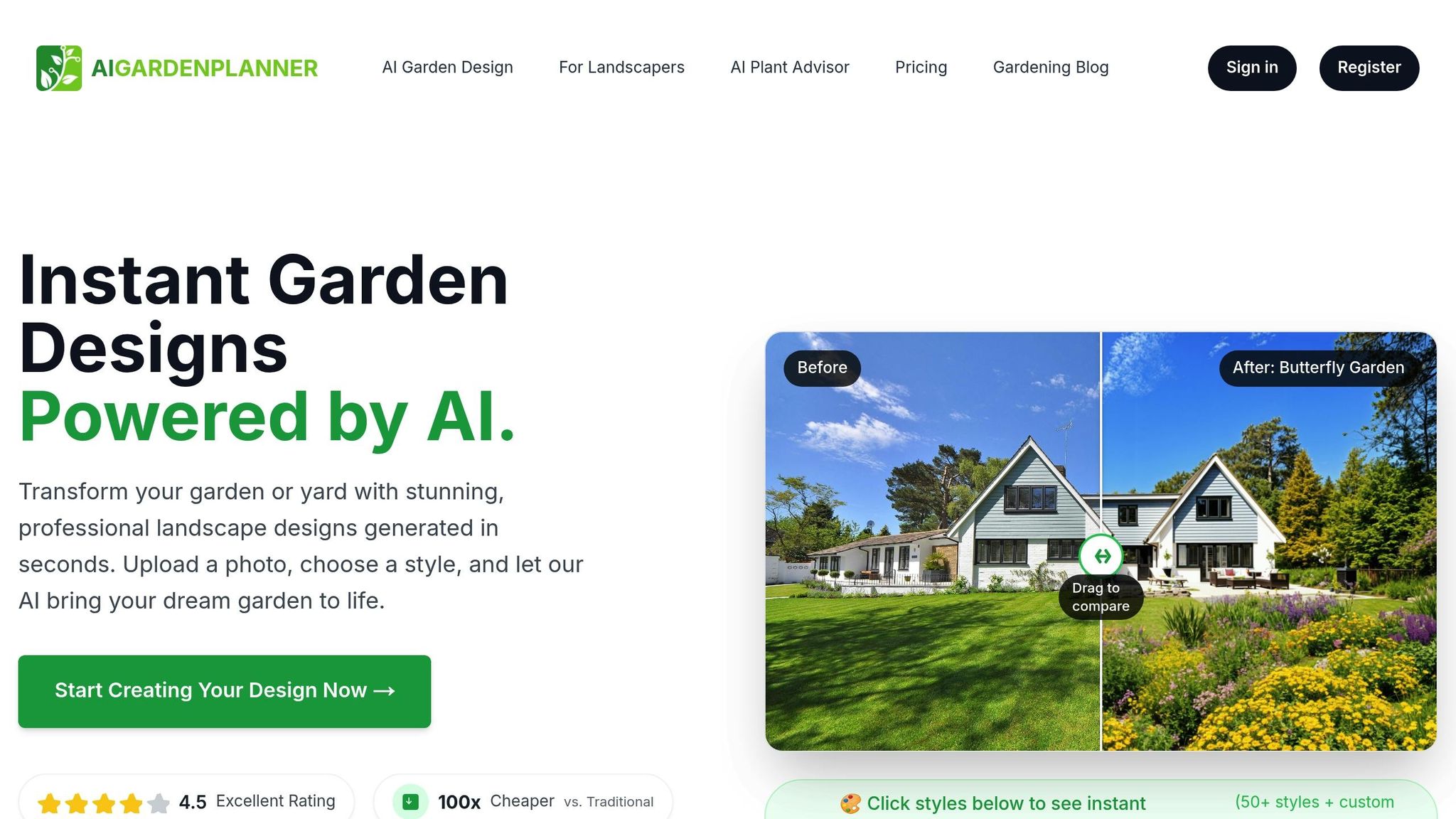
AIGardenPlanner takes the proven benefits of AI pest control and brings them into the realm of everyday garden management. The platform’s AI-powered garden design tool transforms uploaded garden photos into professional landscape designs while seamlessly incorporating smart pest management strategies. Its AI Plant Advisor goes a step further by offering personalized plant recommendations tailored to factors like location, climate, and user preferences. By selecting plants that thrive in their specific conditions, gardeners can naturally minimize pest problems and create more resilient ecosystems. Additionally, detailed growing guides equip users with the knowledge to prevent pest issues before they arise.
With over 50 garden styles to choose from and a suite of professional-grade tools, AIGardenPlanner empowers homeowners and landscaping professionals to design spaces that work in harmony with nature. This data-driven approach aligns perfectly with the principles of AI pest control, boosting both garden productivity and environmental health. As AI technology advances, platforms like AIGardenPlanner will play a pivotal role in integrating cutting-edge pest control solutions into everyday gardening, creating healthier and more productive green spaces for everyone.
FAQs
What challenges do farmers face when adopting AI pest control systems?
Farmers face a range of hurdles when trying to adopt AI-driven pest control systems. One of the biggest challenges is the high upfront cost associated with these technologies, which can be particularly daunting for small-scale farmers. On top of that, limited internet access in rural areas and aging infrastructure often make it difficult to fully implement and benefit from AI systems.
Another issue is the lack of technical know-how required to operate and maintain these advanced tools. Concerns about data accuracy and cybersecurity risks add another layer of hesitation. Plus, some farmers remain wary of AI, either doubting its effectiveness or feeling reluctant to stray from their traditional farming methods.
To address these challenges, there’s a need for targeted investments in better infrastructure, comprehensive training programs, and initiatives that build trust in AI technology. These efforts can help make AI a more practical and dependable ally for farmers navigating modern agricultural demands.
How do AI pest control systems protect sensitive data and ensure privacy?
AI pest control systems take data privacy and security very seriously. They rely on strong encryption protocols to keep sensitive information safe. To add an extra layer of protection, regular security audits are conducted, and team members receive ongoing training to stay ahead of potential threats.
On top of that, cutting-edge tools like blockchain and homomorphic encryption are often used. These technologies help prevent unauthorized access and ensure compliance with data protection laws. By prioritizing these measures, these systems not only maintain their integrity but also build trust with users.
What are the long-term financial advantages of using AI pest control systems over traditional methods?
Investing in AI-driven pest control systems can lead to notable financial savings over time compared to older, manual methods. These advanced systems cut costs by reducing the reliance on pesticides, automating around-the-clock monitoring to lower labor expenses, and delivering more precise pest detection and management.
By streamlining pest control strategies, AI helps eliminate waste and ensures treatments are more targeted, which gradually reduces input costs. On top of that, the improved decision-making and operational efficiency that AI offers can trim expenses even further and enhance profitability. It's a forward-thinking choice for those aiming for cost-effective and efficient pest management solutions.
🎨 Visualize Your Dream Garden Today!
Transform any outdoor space into a professional landscape design in minutes. Just upload a photo, choose your style, and let our AI do the rest.
Start your garden transformation now →Related posts
Related Articles
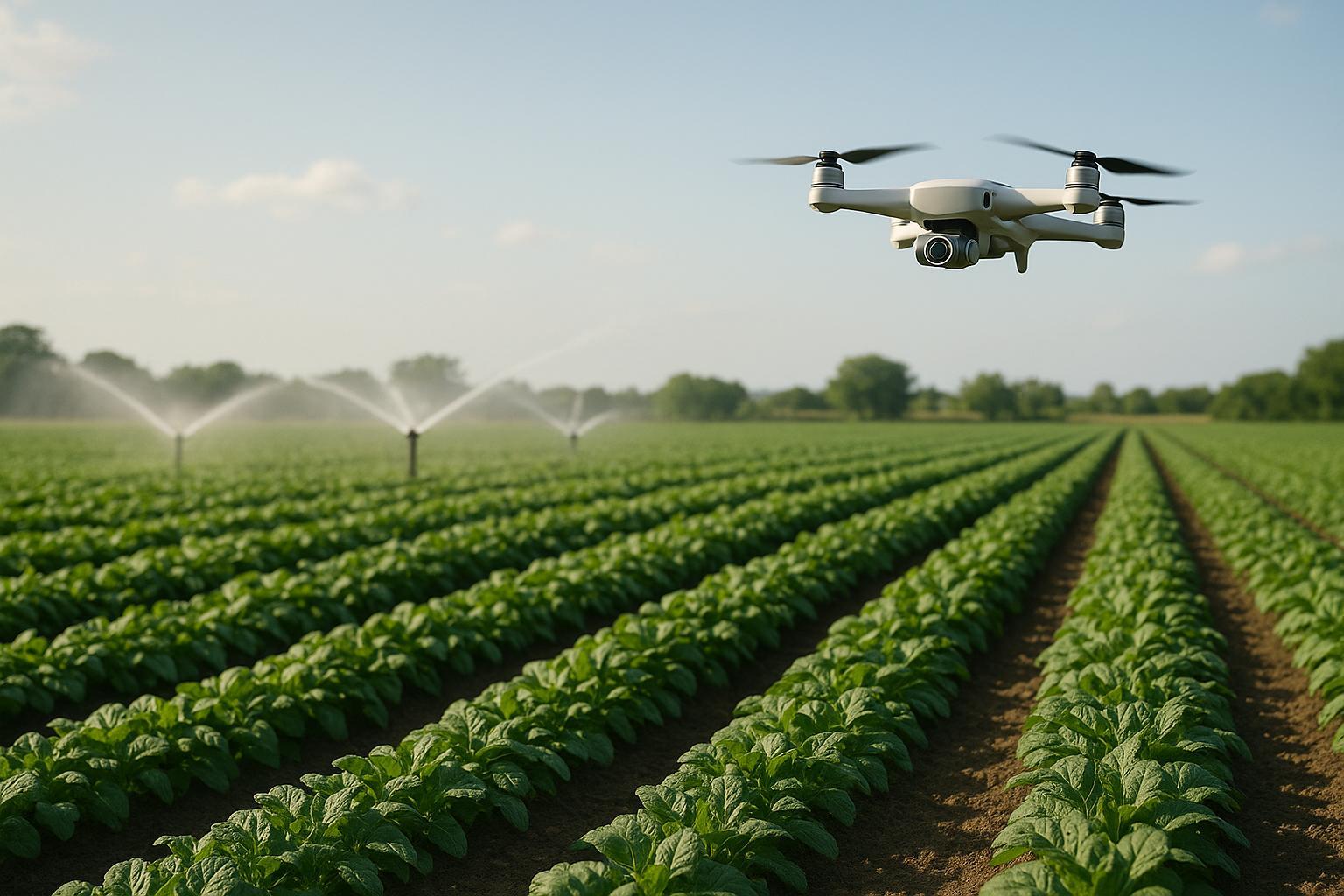
How AI Detects Irrigation System Faults
Explore how AI-driven irrigation systems enhance water management by detecting faults, optimizing usage, and boosting crop yields effectively.
Ultimate Guide to Vegetable Garden Design: Tips for a Productive and Beautiful Garden Space
Discover expert tips on choosing the right location, selecting vegetables, layout ideas, companion planting, and more to create a productive and aesthetically pleasing vegetable garden design.
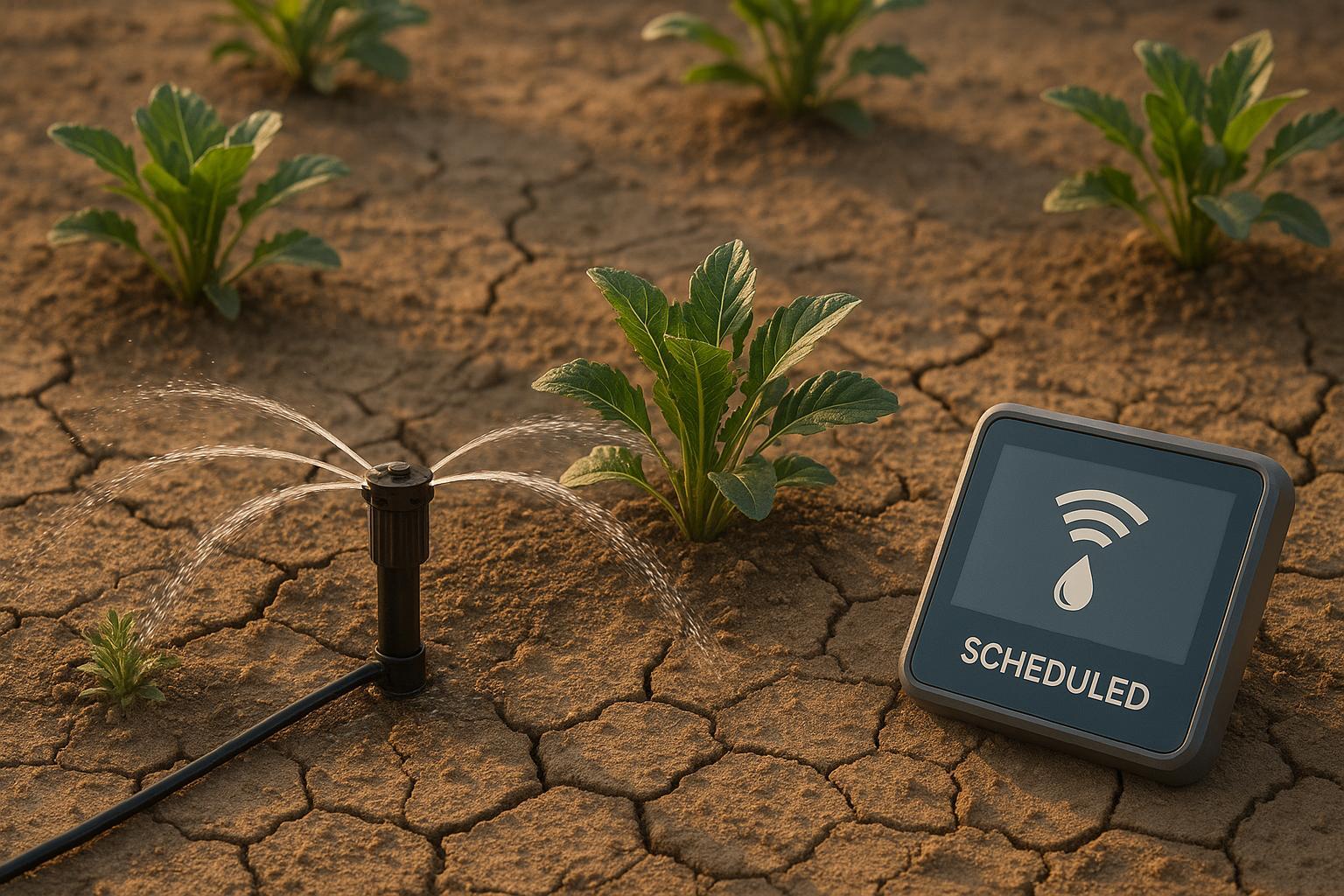
AI Watering Schedules for Drought Conditions
AI-driven irrigation systems optimize water use during droughts, improving plant health and conserving resources through real-time data and machine learning.
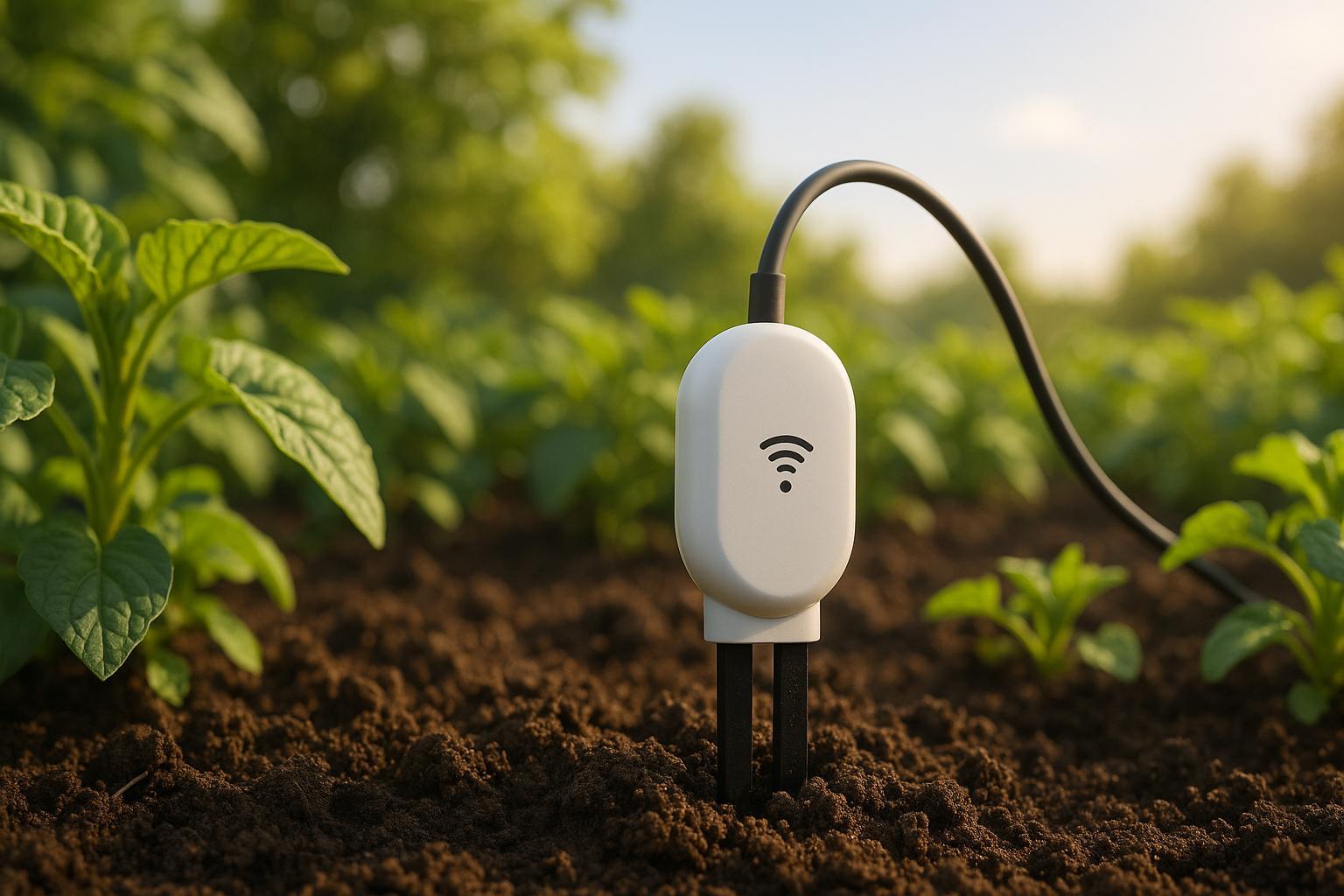
How Soil Sensors Work with Cloud Irrigation
Explore how soil sensors and cloud irrigation systems optimize water usage, enhance plant health, and simplify garden management.

AI in Plant Breeding: Disease Resistance Insights
Explore how AI revolutionizes plant breeding, enhancing disease resistance and accelerating the development of resilient crops.
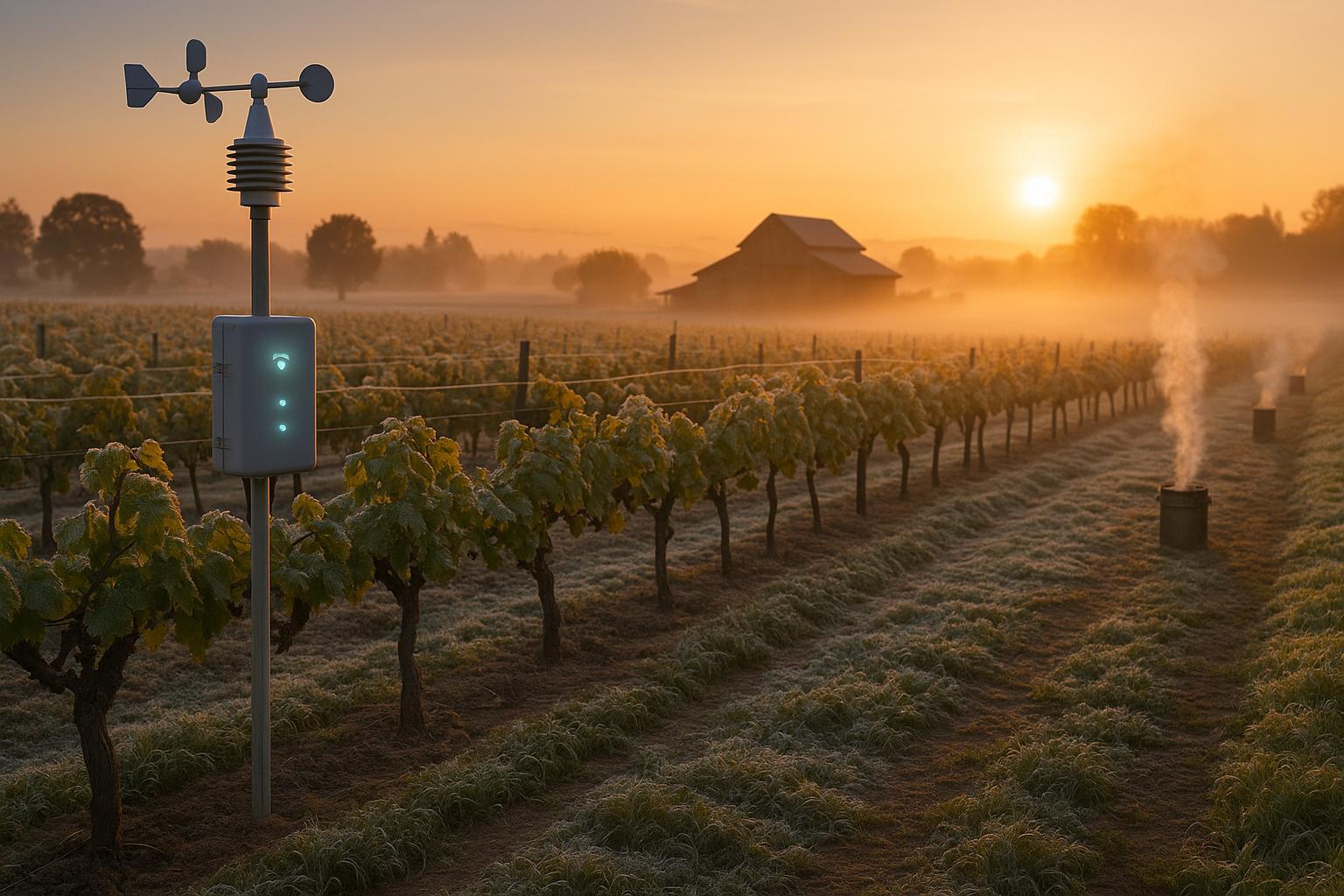
AI vs. Traditional Frost Protection
Explore the advantages of AI-driven frost protection systems over traditional methods, highlighting efficiency, accuracy, and long-term savings for farmers.